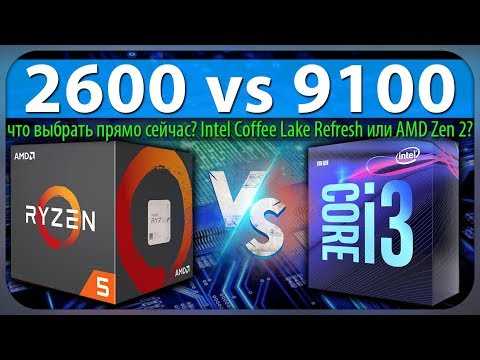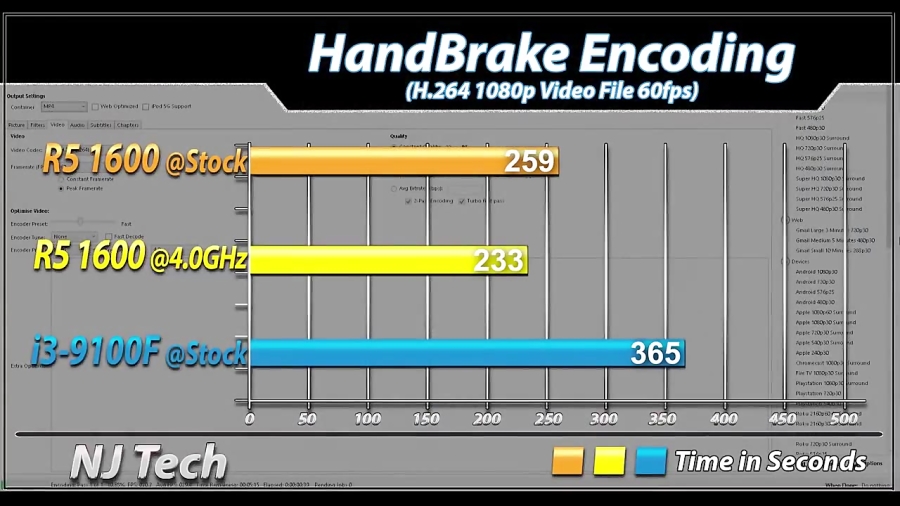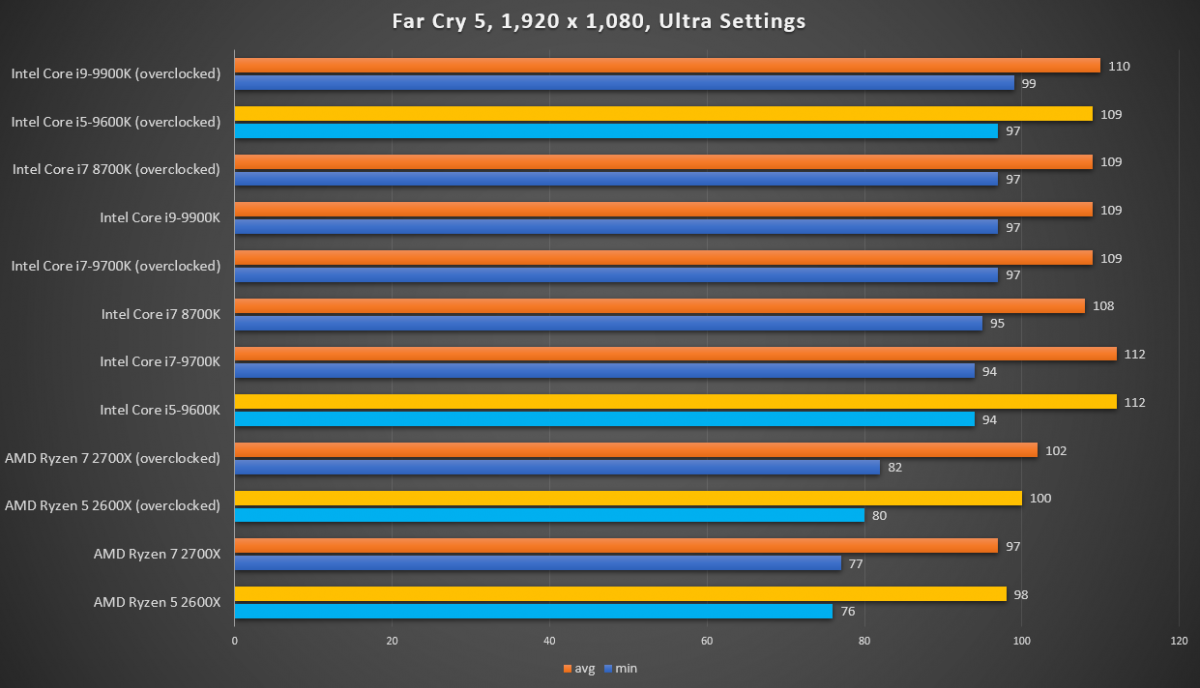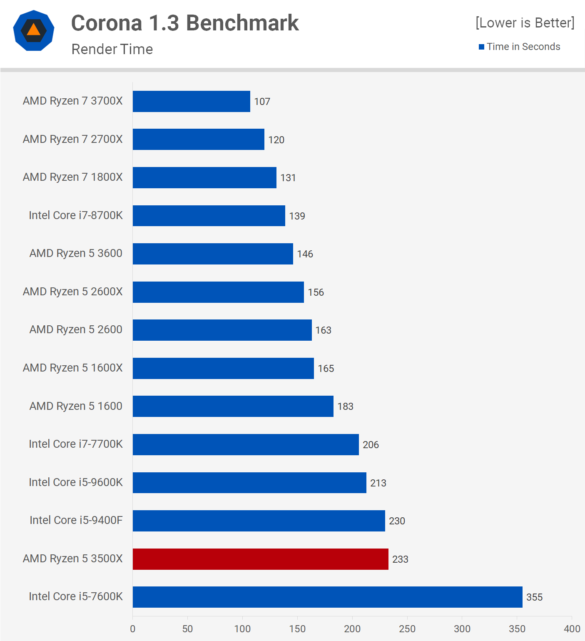Ryzen 5 2600 vs Core i5-9400F
Red versus Blue is an age-old battle, it’s the go-to of opposing forces, and the Information Age shows that there’s no stopping this trend.
The year 2000 marked the major blow in the everlasting battle of Team Red versus Team Blue in the consumer processor market. AMD managed to blow away the market with the first 1GHz consumer processor, paving the way for the amazing rivalry between the two companies.
Fast forward to 2017 and this war was hot as ever. Intel’s release of its 8th generation of Core processors back in 2017 rocked the budget market, even after AMD’s Ryzen initial debut. Though, take a step forward to 2018 and bask in the improved glory that is Zen+.
What a budgeter’s dream.
Now, we understand that it’s 2019 and the launch of Ryzen 3000 is just around the corner, but we don’t know exactly how the new line will hold up in price-to-performance yet. So, we thought we’d open the old filing cabinet and take one last look back on the best price-to-performance battle of 2018.
VS
AMD
In AMD’s corner, packing a whopping 6 physical cores and 12 threads, the Ryzen 5 2600!
Price is the 2600’s specialty with an MSRP of $199, but you can find this CPU for well under that nowadays. The 2600 runs for around $150 on average with the new 3000 series on the horizon.
Running at a base clock of 3.4GHz, this puppy can boost all the way up to 3.9GHz, but wait there’s more! Just like the rest of AMD’s Ryzen lineup, the 2600 has all cores unlocked. This means overclocking, of course, and it’s no slouch in that department either.
The 2600 can hit up to 4.2GHz on all cores (with the right cooling, though the stock one is amazing), and for $150 that sounds like crazy talk. Imagine explaining that to someone from 1999.
Intel
On Intel’s side, also boasting 6 physical cores with only 6 threads, the i5-9400F!
The Intel i5-9400F is part of Intel’s brand-new F-series lineup. The whole shtick of F series? No more integrated graphics.
Crazy, right?
After Ryzen’s initial success against the 8000s, Intel sought to kick AMD right back with the 9000s. By removing the integrated graphics, Intel couldn’t make too big of a performance jump from the 8400, but they did lower the cost greatly.
The 9400F sits at around $160, which is just amazing for an Intel hexacore CPU. Packing a base clock of 2.9GHz and a boost of 4.1GHz (a 0.1GHz improvement from the 8400), this CPU will handle whatever you throw at it, with a good cost to boot.
Comparison
Now that you’ve met both of our competitors, it’s time to put them head to head in a direct performance comparison.
So, as you can see, Intel comes out on top by a slight margin on every field up until Multicore. Intel has always been known for its single core performance after all.
Overclocking
Now, this doesn’t necessarily win the battle. One thing that AMD has always dangled over Intel’s head, is officially supporting overclocking on all CPUs in their lineup.
Keep in mind that, if you do choose to overclock, you’re going to need an aftermarket CPU cooler. Most CPU coolers will fit inside of even the smallest ATX case on the market.
Although if you’re going to be working in a micro ATX or mini ITX case, you’re going to want to check for compatibility issues before buying.
With this information on the table, why don’t we pit AMD’s overclocked 2600 versus the 9400F’s boost?
Well, huh, that’s weird. AMD didn’t really gain too much footing on Intel, other than even further widening the gap in the multicore category.
Results
I guess we can really call them equal, they have about the same performance in most categories unless of course, you need that extraordinary multicore speed for your next budget workstation.
It seems like it’s really just the fight for preference, whether you like one side over the other, but maybe there’s something else.
Gaming
What kind of component review would this be without some video game benchmarks so you’ve got a feel of what your ever-important FPS will look like?
Considering these are generally mid-range chips we decided to pair them with an AMD RX 580 which is one of the most popular mid-range graphics cards on the market right now.
Ryzen tends to fall behind the Core series in gaming, but not today. The 2600 held its own, trading blows with the 9400F and performing far better in a couple of games.
As we head through 2019 and further, developers are starting to notice the rise of higher core counts in CPUs, and they’re adapting by allowing games to start taking advantage of these extra cores for a more efficient flow.
Pricing
The final category we’re going to look at before concluding is the price.
A price can make or break your purchase, and/or your bank, so making sure you’re always getting the most performance out of your dollar is key.
First, we’ll look at their relative standing on the market.
The 2600 comes out on top in user rating by a huge margin, and the 2600’s market share versus the 9400F’s is 3.09% to 0.77% respectively, but take this with a grain of salt, as the 9400F has only been around for about 4 months compared to the 2600’s year of reign.
The 9400F comes in at a cool $150, while the 2600 comes in at just $5 less. Wow, they really are making it hard to make a decisive decision.
There is, however, one thing Ryzen has that Intel can’t compare to.
Amazing stock cooling.
The 2600’s included Wraith Stealth cooler is one of the better coolers on the market, ignoring the fact that it’s even stock. The fact that AMD was able to include it at this price point is baffling but quite welcome.
Taking this into account, it’s hard to choose the 9400F. You’ll have to spend extra on a good cooler to keep it under control, and that just ends up driving the price even further away from AMD’s offerings.
When they put forward very similar performance, as they do, that cooler really pushes AMD into the spotlight as our choice between the two.
Don’t just take our word for it though, do your own independent research before purchasing, and always buy what’s best for you.
See Also
- For a full list of all the articles in Tek Eye see the full site Index.

Author:Jacob Tuwiner Published:
i5-9400f or Ryzen 5 2600 — Which is the better option?
It is very common that, when buying a device, people look at all the details that can make their device more useful, an essential detail is the processor that this device has. This comparison also happens with the Intel® Core ™ i5-9400F processor and the AMD Ryzen 5 2600 processor, mainly because their prices in the market are similar.
If you want to compare processors with the best cost (the cheapest price) and that offer you the best possible performance, stay here so you can see the comparison between i5-9400f Vs Ryzen 5 2600 and the technical details of each of them.
How does the Intel® Core ™ i5-9400F beat the AMD Ryzen 5 2600?
Both processors have 6 cores, which makes them start very evenly, but the i5-9400F processor has a higher maximum frequency with 4.1Hz Vs 3.9Hz with a difference of 0. 2Hz, which is reflected in a higher clock speed for turbo.
2Hz, which is reflected in a higher clock speed for turbo.
Another advantage that i5-9400F has, is that it has F16C and FMA3; They are used to speed up tasks such as adjusting the volume or contrast of any image.
Something they also have in common is that none of them have integrated graphics, so if the person wants, they can buy a separate graphics card.
In contrast, the i5-9400F may outperform you in additional technology and instructions. Let’s see the specifications in a table:
This information is important if the person needs to know if the specific processor supports any additional or specific technology. Here you can see that the i 5-9400f Vs Ryzen 5 2600 model has another advantage thanks to its specifications.
Something that people also tend to look at is how much security the processor can provide. A processor with integrated technologies that can increase the security of the system in one way or another will always be a better option, since anyone tries to avoid unwanted access or hackers at all costs.
In a way, the i5-9400F is more secure because it packs more positives into its built-in security technologies.
Finally, the i5-9400F has an advantage in terms of speeding up work on virtual machines over the Ryzen 5 2600, as these have more built-in display technologies.
In summary, if we compare i 5 9400f Vs Ryzen 5 2600, the first Intel® Core ™ has more benefits, specifically in:
- Higher maximum frequency
- It has F16C and FMA3
- More technology and additional instructions
- Thermal Monitoring
- Identity Protection
- More advanced display technologies
How is the AMD Ryzen 5 2600 Vs Intel® Core ™ i5-9400F better?
When the general characteristics of both processors are detailed, one can automatically see advantages of the AMD Ryzen 5 2600, such as the size of the semiconductors.
Having a smaller size in semiconductors is an advantage; a smaller size is synonymous with something newer. In other words, the process of creating the chip for the Ryzen 5 2600 processor is newer than that of the i5-9400F.
In other words, the process of creating the chip for the Ryzen 5 2600 processor is newer than that of the i5-9400F.
On the other hand, the performance of the Ryzen 5 2600 outperforms the i5-9400F in many respects.
First of all, the speed of the computer’s CPU helps and is essential for the ability to run applications. It is the number of processing cycles per second, taking into account the cores in which the central unit can operate.
The higher number of threads on the Ryzen 5 2600 puts it at an advantage in higher performance and more efficient multitasking.
As for the cache battle between i 5 9400f Vs Ryzen 5 2600, a higher amount is reflected in a higher performance of the whole system and a faster CPU giving the winner to AMD. On the other hand, the larger the kernel, the more data can be cached.
Last but not least, an unlocked multiplier, allows better and higher performance in games and other applications.
When comparing both devices, the AMD processor model shows an advantage in terms of memory:
Higher speed of RAM means a faster system, although the difference is not very wide, the Ryzen 5 2600 processor is faster.
As for the data that can be stored in memory with a maximum speed, the Ryzen 5 2600 processor has more capacity with 43.71GB/s.
ECC memory is capable of self-recovery from some errors.
In summary, AMD Ryzen 5 2600 has more benefits compared to the Intel® Core ™ i5-9400F processor, specifically in:
- Faster model with more memory capacity.
- ECCMemory.
- Higher performance.
- 2nm smaller than semiconductors.
- 6 more CPU threads.
What is our final verdict?
Both models have many things in common, so it is difficult to choose a winner between i5 9400f Vs Ryzen 5 2600 being some characteristics so equal. But if you are looking to have the best performance and memory capacity, the advantages that Ryzen 5 2600 has over i5-9400F are totally wide. Therefore, Ryzen 5 2600 is recommended.
-
-
#one
Hello, it’s me.
Assembling a computer. Not to keep the server, but for your own pleasures.
I am writing even more for myself, so that when writing, somehow everything fits in my head.
In general, I think it’s better to take. I have already read so much that I myself am confused which is better.
In general, here are two assemblies that I imagine in my head:
AMD
And there is INTEL
What are the pros and cons I see if we take a long-term perspective:
1) AMD. AMD is like an excellent r5 2600 processor. I studied the motherboard. I can well overclock the RAM on it so that it is not a bottleneck, because the bandwidth of the AMD bus is the bottleneck of this generation of processors.
I don’t play a lot of games, but naturally, like any other person, I want maximum performance in any game. Otherwise, I really love video editing, I love making maps in hammer. I like to open a million tabs and in general I have 2 large monitors, I have a lot of everything (you have the same, I’m sure)
2) INTEL. i5-8400 or i5-9400f? What’s the difference. They are the same price now. I want to draw your attention to the fact that the assembly is more expensive and the motherboard is much worse in terms of functionality, overclocking, etc. etc. and I’m not sure about it at all.
i5-8400 or i5-9400f? What’s the difference. They are the same price now. I want to draw your attention to the fact that the assembly is more expensive and the motherboard is much worse in terms of functionality, overclocking, etc. etc. and I’m not sure about it at all.
Naturally, in terms of price / performance, AMD would be the best choice. It is these two assemblies that are head-to-head better than AMD. In most games, INTEL will be 5% better even in frame time. However, in any other tasks, INTEL will lag behind. At what seriously to lag behind.
Well, it would seem…
Although, in the long run, INTEL is better. If we upgrade to i7-8700 then not a single percentage of AMD even r7 2700x will be better in terms of performance in games and most applications and any other work. But the motherboard is too poor.
By the way, the top AMD R7 2700x performance of in games is no better, and sometimes even worse than that of i5-8400 or i5-9400f.
It turns out that there is simply no way to grow further on AMD. All the same, I give priority to maximum performance in games, even though they take the smallest part of my pastime.
All the same, I give priority to maximum performance in games, even though they take the smallest part of my pastime.
Here is my question, over which I have been racking my brain for a week. What’s better then? I want to hear a reasoned answer.
P.S. There is nothing more permanent than temporary. Not the fact that I’m in a month with the next z.p. I’ll run to buy I7-8600k.
P.S. Now I have a xeon x3440. He is sorely lacking. This, so that you understand, the process is already the 10th year. Here’s a long-term perspective…
— Added later —
To fit into one price category, with a normal motherboard and RAM, you need to take the i3-8100. I think that i3 is not a competitor. 4 cores 4 threads, against 6 cores 12 threads, taking into account normal RAM (well, average).
Again, not the fact that I will run later to buy an i7. I don’t want to run around, resell, etc. etc.
Last edit by moderator:
Black Widow
Member
-
-
#2
Why do you say that the RAM is a weak point for AMD but not for Intel? Have you looked at the tests?
And why not get a cheaper motherboard
GIGABYTE B450M DS3H — Motherboards — computeruniverse
MaZa
Member
-
-
#3
amd
— Added later —
amd ryzen 2600 + motherboard gigabyte b450M
— Added later —
you can get RAM from China for 3k for 8 GB (3200 mhz)
— Added later —
hearest wrote:
By the way, the top AMD R7 2700x performance of in games is no better, and sometimes even worse than i5-8400 or i5-9400f.

Click to expand… 9
#four
Black Widow wrote:
Why do you say that the RAM is a weak point for AMD but not for Intel? Have you looked at the tests?
And why not get a cheaper motherboard
GIGABYTE B450M DS3H — Motherboards — computeruniverseClick to expand…
xMaZax wrote:
amd
— Later added —
amd ryzen 2600 + gigabyte b450M motherboardClick to expand…
I am satisfied with the current amount and I am ready to pay extra for the motherboard so that later I can put, for example, r7 2700.
Or the processor that AMD should introduce this year (I hope the socket will not be changed, it’s not Intel). I want to try something new and I’m very afraid that on AMD I will run into a multi-thread that I don’t need (no one needs it). I watched a million tests, I know that AMD is equal or inferior in performance in top solutions even to the i5-8400.
If I’m wrong — argue. I’m not a stubborn fool, I just want to understand the topic because it’s interesting to me.
The i5-8400 is 2700x in most tests. The processor is 2 times more expensive. What happens if we put i7-8700? This is what I am afraid of, that in the future I simply will not be able to increase the performance of my system by buying a more powerful processor.

MaZa
Member
#5
hearest wrote:
I am satisfied with the current amount and I am ready to pay extra for the motherboard so that later I can put, for example, r7 2700. Or the processor that AMD should introduce this year (I hope the socket will not be changed, it’s not Intel). I want to try something new and I’m very afraid that on AMD I will run into a multi-thread that I don’t need (no one needs it). I watched a million tests, I know that AMD is equal or inferior in performance in top solutions even to the i5-8400.

If I’m wrong — argue. I’m not a stubborn fool, I just want to understand the topic because it’s interesting to me.
The i5-8400 is 2700x in most tests. The processor is 2 times more expensive. What happens if we put i7-8700? This is what I am afraid of, that in the future I simply will not be able to increase the performance of my system by buying a more powerful processor.
Click to expand…
How do you like that?
intel on 4300 puffs and ryzen on 4000) 9
#6
xMaZax wrote:
How do you like that?
